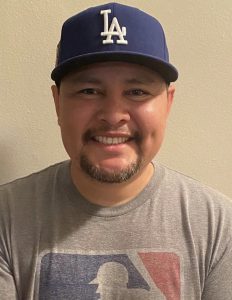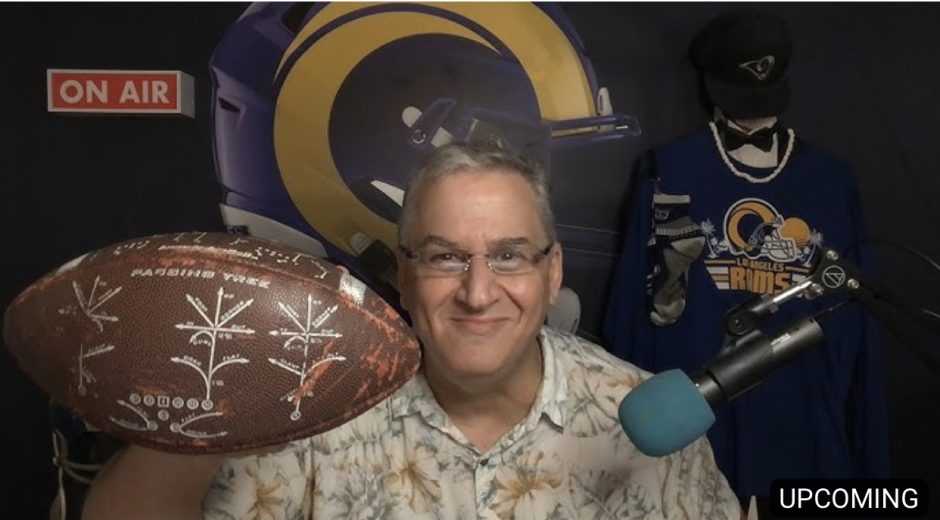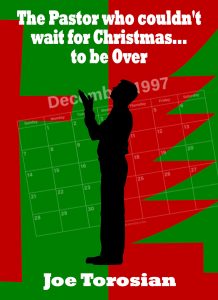
Steven Urena
By Steven Urena
(With Spring Training comes the opportunity to see the players we seldom see. The ones who make up “Everyone Else” in an organization. In this edition of The Urena Express, Steven Urena has conversations with two of these players—brothers Carlos & Pedro Flores.)
Carlos Flores
High School: Sierra Vista High School
MLB Draft: 1990 – Milwaukee Brewers, 36th round
Pro Career: 3 total years.
Coaching Career: El Rancho High School, El Monte Dukes
Urena: You signed out of high school. What was it like going from high school to pro ball?
Carlos Flores: The decision to sign out of high school was, without question, one of my most blessed moments in my life.
When the phone rang and I spoke to my scout, Del Crandall (former Boston and Milwaukee Braves player), it was really hard to soak everything in and realize I was going to be a professional baseball player. Crandall told me that I was taken in the 36th round of the June Amateur Draft by the Milwaukee Brewers.
Many adjustments would have to be made to get me to Spring Training. I almost missed my high school graduation but, luckily, I was able to attend. When I left, the reality set in that I would be out on my own for the first time.
The biggest adjustment would be the transition from an aluminum bat to a wood bat. My hitting instructor did not let me play an inning in instructional ball until he felt I adjusted to using a wood bat.
In the end, the ability to swing the bat was what led to a decent rookie year in the Arizona League. One of the coolest things was meeting many of my heroes I watched play on television. I was the youngest player in camp. It was quite a relief that the veteran players took me under their wing. The veterans remembered what it was like to be in my shoes and how overwhelming the world of professional baseball can be.
Urena: There’s so much talk about launch angle, exit velocity, sabermetrics, etc. What hitting philosophies were taught to you during your professional career?
Carlos Flores: In the 1990’s, the hitting philosophies were a bit simpler than today’s advanced stats.
As a shortstop, and considered to be more on the short side, my role was determined to be a situational hitter. It was determined very early that I would not try to hit for power, especially since I had gap power, at best. This was also something that was new to me because, as you know, we come from the San Gabriel Valley (our own little baseball mecca) where the best players hit for power.
My batting practice routine, along with the rest of the infielders, consisted of executions. This included hitting the ball to the right side, getting runners over, placing down bunts and sacrificing my at-bat. I expected big high fives upon returning to the dugout.
I did raise one eyebrow when I had an interesting conversation with my then batting instructor, Alex Tavaras. I told him “Coach, why am I asked to lay down bunts and get the runner over when this is the American League, home of the power hitting shortstop?” His simple response was, “I’ll show you tomorrow.”
As we got to the batting cage, he told me to swing for the fences. I tried to hit home runs, but in spring training, everyone knows, most fields are huge. He had made his point, as I did not come anywhere close to hitting the ball over the fence. The hitting philosophy? Hit how you were built!
Urena: Aside from pitching, shortstop is arguably the toughest position on the field. What makes a good shortstop?
Carlos Flores: I was an outfielder with the El Monte Dukes. How I was drafted as a shortstop is one of life’s mysteries! I was looked at in one high school tournament by my scout, Del Crandall, and it was enough for a draft pick.
I learned quickly from some of the finest minor leaguers and instructors what it would take to play at this level. One strategy I was taught was to take note of the catcher’s called pitch, and anticipate where the bat angle could direct the ball. Of course, anything off speed had the high potential of coming my way. Reading the ball off the bat, as well as a quick first step, were essential elements of a consistent shortstop. Always knowing and playing different scenarios in your head mid inning is another important strategy. Pat Listach told me to ask myself, “What would I do right now if the ball is hit to me”? It’s simple and effective, if forces you to think of the possible play ahead.
A good shortstop is a captain and leads on the field by example. It’s what my instructors wanted out of me as I started to pull away from the competition at shortstop. Be vocal, be a bull, and most importantly get dirty!
Urena: What does the daily grind look like for a minor leaguer during the season?
Carlos Flores: In the Arizona League—AKA: The Fire League—the dog days of summer are just that. The Arizona League challenged your toughness, both mentally and physically.
The typical day of a minor leaguer starts roughly at 5:30 am. You have to be ready to catch the team bus or vans promptly at 6:00 am. Then there’s a travel time of about 40 minutes. Upon arrival you do what we called a “Clark Kent,” get dressed quickly and report to your assigned instruction for the day. For me, it was mainly the half-cut infields, made only for infield situations.
Instruction ended at approximately 9:30 am. We then would head into the clubhouse and dress into our home uniforms. In pro ball, there is no pregame (infield/outfield), you simply report to the dugout if your name is on the lineup card that day. Those who were not chosen to play in the game, reported to instruction camp. Thank goodness for me, I usually played.
Travel days can be the worst part of a minor leaguer’s experience. The furthest I ever traveled by bus was a 14 hour trip from hell. We went from Mason City, Iowa to St Paul, Minnesota. The best thing you can do for yourself is sleep and think about how you can get to the next level.
Long bus rides are part of baseball life when you’re in the lowly minors. Expect to put in your fair share of work through instruction, through travel, being given the best advice possible to succeed and then finally trying to make it happen.
As luck would have it, I was too far down on the depth chart to one day make it to Milwaukee, but I wouldn’t trade that experience for anything in the world. Getting called into the skipper’s office and being told my time with Milwaukee is over was downright heartbreaking. But even as I was being driven to the airport to come home after three amazing years, my trainer told me, “Chucky, this ain’t over for you, at least your love of the game is not over”
Wow! That was a great parting gift. I’ll always appreciate that. At this point, I decided it was time to change my field of endeavor. I was part of something I had always wanted to do, and I was OK with that.
Urena: What advice would you give a young ball player that wants to play at the next level?
Carlos Flores: As a high school baseball coach now, most of my kids know my baseball background and ask how can I reach the next level? My response to them is “ I hope you’re talking about college, because that’s what I want for you. If you’re not going to be a top 10 draft pick, you’re going to college to play at that next level.” That was my lesson in pro ball, the harsh reality that you’re more than likely not going to make it. Today’s young baseball players have their own hitting instructor, pitching coach and or catching coach. With all due respect, they are being molded for a life of college ball, not professional baseball. Because nothing they teach them in the cage can prepare them for what lies ahead—life on the ROAD!
***

Pedro Flores
Pedro Flores
High School: Sierra Vista High School
College: East Los Angeles College
MLB Draft: 1995 – Detroit Tigers, 47th round. 1996 – Los Angeles Dodgers, 18th round.
Pro Career: 13 total years.
Coaching Career: Sierra Vista High School, El Monte Dukes
Urena: You were drafted out of high school and out of college. What was the draft process like? Why did you choose to go to college instead of signing out of high school? Did a lot of teams show interest in you? Were you expecting to go sooner or later? Is it a stressful process?
Pedro Flores: Scouts began taking interest in me my junior year in high school. It was the first time I was hitting 90 mph. Different teams would come out to my games and write down their notes on me (velocity, character, make-up, etc). I was drafted late in the 47th round by the Tigers so I decided to enroll at East Los Angeles College (ELAC) for the year in hopes of improving, maturing, and getting drafted higher. After a solid year at ELAC, I was drafted again, this time by the Los Angeles Dodgers, in the 18th round.
When the Dodgers called, I was at Baldwin Park High watching a Sunday league game. My family, packed in our car, came to find me and give me the news. I raced home as fast as I could and made the most important phone call in my life. It was a great experience for me and my family. The scout came to my house, we negotiated, and then I signed the contract. A few days later, I had a gathering at my house. I invited my little league coaches, high school coaches and college coaches. These were all people who made an impact in my life.
I wasn’t sure about going higher or lower in the draft but as a kid you wish for these moments. Not only was I drafted but I also was drafted by the team I love! The LA Dodgers.
It was not stressful at all because of my age, I guess. I played ball to the best of my ability and I was blessed to play 13 years total and coach professionally for 2 more years.
Urena: You were drafted as a pitcher. What philosophies, strategies and fundamentals were taught to you in the Dodgers organization?
Pedro Flores: Charlie Hough, Mark Brewer (son of Dodger great Jim Brewer), Sandy Koufax and a few old school Dodgers preached the “attack the strike zone” mentality. Trust that you have prepared yourself to pitch 1 inning or pitch 7 innings and to stay mentally tough. Regardless, if you are throwing a no-hitter or giving up a grand slam. Compete every time!
Urena: How does a pitcher prepare for a start in professional baseball?
Pedro Flores: By the time you get to professional baseball, you have a good sense of what works and what does not work. You learn quickly when to throw long, when to throw your bullpens, and your workout routine.
As a starter, I made my start, took the next day off, long toss/bullpen the next day, and a flat ground the day before my start. To keep my stamina up, I ran every day.
Mentally, I started taking mental notes on hitters I was going to face a few days before I pitched. I wanted to know the strengths and weaknesses of hitters before it was my turn to pitch. I kept an eye out for who liked to bunt, steal bases, and who the pesky hitters that always made me work extra. When I was younger, I would challenge myself and try to get them out in a few pitches but as I got older, it was just easier to hit them and save me the trouble of throwing extra pitches (salty veteran move).
Urena: Who were your mentors during your professional career?
Pedro Flores: Ismael Valdez, Antonio Osuna and Tommy Lasorda are a few big names that stand out.
Tommy Lasorda was big with motivation and he would always tell me and others, “How much of a price are you willing to pay to get to your dream”. He always said that you have to train, eat, sleep and drink baseball if you want to get better. Those were only some names but I had other great coaches as well that contributed.
Urena: What advice would you give a young ball player that wants to play at the next level?
Pedro Flores: The advice I would give hitters is the same advice Tommy Lasorda gave me, “How much of a price are you willing to pay to get to your dream.”
Contact: Steve Urena at:
Email: theurenaexpress@gmail.com
Twitter/IG: @theurenaexpress









